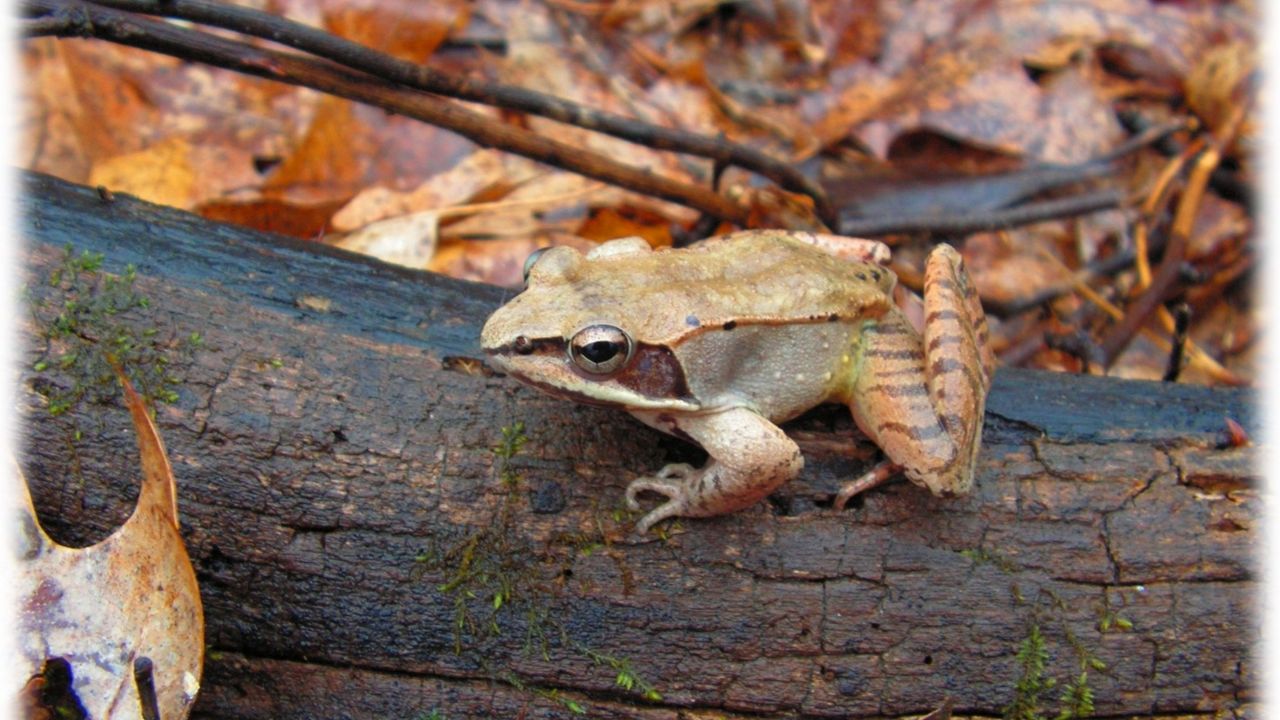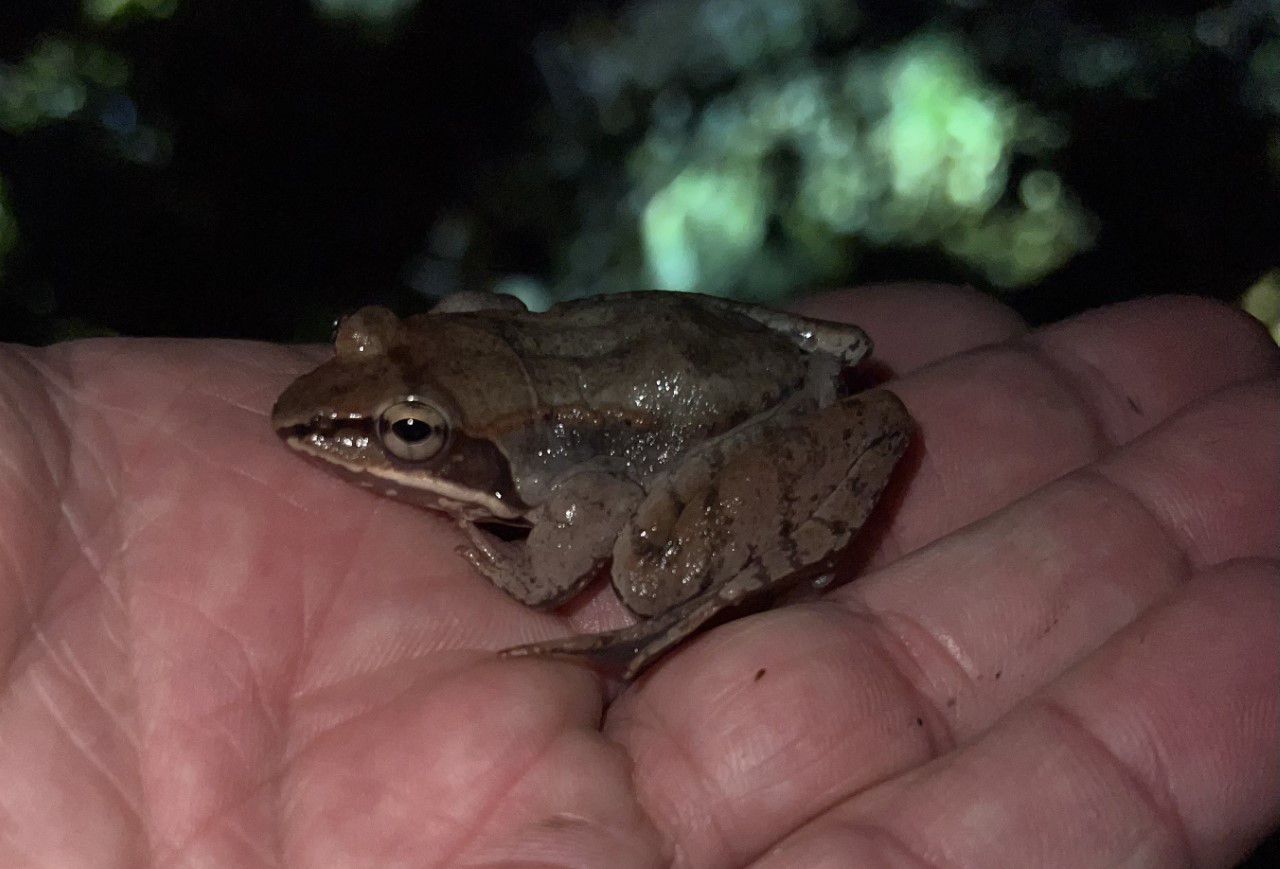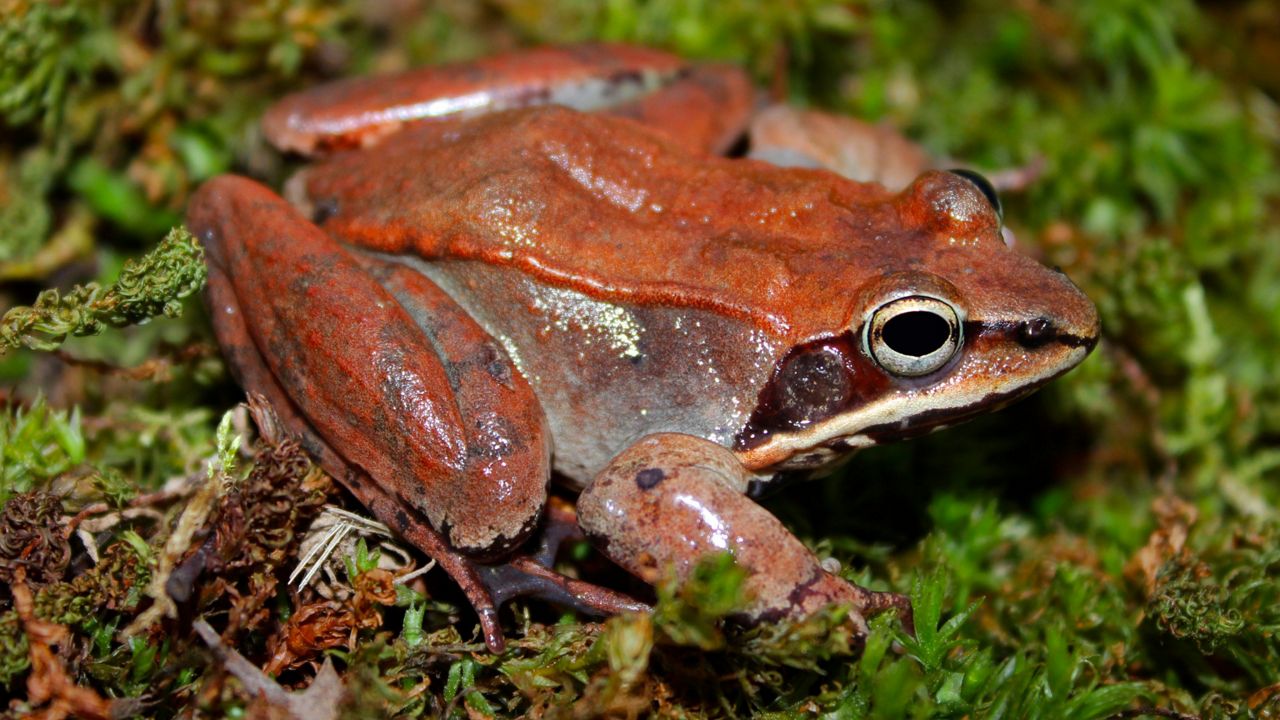Ever notice during the winter the lack of bugs, spiders and even amphibians? Where do they all go? The answer might surprise you.
A variety of frogs live in the central and eastern U.S., including the spring peeper, boreal chorus frog, gray treefrog and wood frog.
According to Matt Ormsby, Assistant Natural History Biologist with the Missouri Department of Conservation, most of these frogs are found in large urban areas. He notes that “these species normally are only found in or near water during their breeding season, and outside of that can be found in forested woodlands.”

During winter, these frogs have somewhat of a superpower. With no food available and an inability to migrate south to warmer climates, they literally freeze themselves into hibernation.
The frogs burrow into shallow mud, finding a spot under the ice where the temperature stays just about freezing. “They slow down their metabolism and heart and absorb the oxygen from the water through their skin,” explains Ormsby.
The most extreme example of suspended animation is the wood frog. It has a widespread range, encompassing most of the northeastern U.S., Canada and Alaska. “It is the only frog that lives within the Arctic Circle,” emphasizes Ormsby.
A cold-blooded creature would need some sort of survival tactic in such harsh condition and this frog has evolved do it.
The “freezing” part has to do with a special enzyme that the frog secretes. Ormsby breaks it down for us.
“The biggest part of the process is the special glucose that the frog’s liver produces just before the freezing process. This special glucose is sent to all tissues, organs, cells in the frog’s body, which acts somewhat like a natural antifreeze and keeps the water inside the cells from freezing and causing damage.”
He adds, “water outside the cells does freeze inside the frog but the cells are protected. Nearly 65% of the frog’s body is frozen solid. Most of this is in the abdominal cavity surrounding the organs and in the eye lenses and water between the skin and muscle. The heart and lungs stop while the frog freezes.”
"wood frogs can remain ‘frozen’ in this fashion for up to 8 months."
Wood frogs begin this process anywhere from late November to January.
Frogs emerge from hibernation when daytime temperatures stay above freezing and close to freezing at night. When reanimating, “the heart starts back up and begins to deliver oxygen rich blood to help flush out the cells and the special glucose and cell wastes,” says Ormsby.

Even with variable weather of extreme cold and warmth, the frogs seem adapted to the fluctuations. “The frog can freeze, thaw and refreeze multiple times without issues,” he says.
However, "wildly fluctuating extreme weather events back-to-back could prevent them from being able to start or end the process quickly enough. It takes about a day to start and finish the thawing and waking up process.”
This entire thing might seem like science fiction, but scientists are studying these amphibians for medical purposes. With one studying focusing on organ donation and how this process could give longer viability to organs before getting to the recipient.
This frog could also help with diabetes, says Ormsby. “When the wood frog starts producing its special glucose, its blood sugar levels go to more than 100% of its normal levels and suffers no ill effects. This is being studied in relation to how to better control or stop diabetes in humans without serious side effects.”
As temperatures warm and the first songs of these frogs sound, think about how these amphibians spent their winter, frozen in time.
Our team of meteorologists dives deep into the science of weather and breaks down timely weather data and information. To view more weather and climate stories, check out our weather blogs section.



